The Apple iPhone 6s and iPhone 6s Plus Review
by Ryan Smith & Joshua Ho on November 2, 2015 8:00 AM EST- Posted in
- Smartphones
- Apple
- Mobile
- SoCs
- iPhone 6s
- iPhone 6s Plus
Display
In pretty much any smartphone, displays are going to be one of the most important aspects of the user experience. If a display is dim or has a highly reflective display it will be unreadable outdoors. If the contrast is low, the display can become difficult to read and not particularly appealing to the eye. Other issues like lack of color stability and contrast stability with changes in viewing angles will be much more noticeable than on something like a laptop or desktop where the monitor is usually kept at a constant position in space relative to the eye. In order to evaluate these factors we use both relative comparisons and absolute measurements. Although the human eye is sufficient for relative comparison, for absolute measurements we use X-Rite’s i1Pro2 spectrophotometer for precise color and luminance measurements, along with X-Rite’s i1Display Pro colorimeter for accurate contrast figures. Hardware alone is insufficient for collecting and presenting data, so we also use SpectraCal’s CalMAN 5 with a custom workflow, which allows for collecting and presenting data in a readable manner.
In the case of the iPhone 6s and iPhone 6s Plus, the display appears to be effectively unchanged from the iPhone 6 and iPhone 6 Plus. The iPhone 6s retains the 1334x750 resolution of the previous variant, and the iPhone 6s Plus has the same 1080p resolution as well. Apple continues to use the same M2 scaler as well, which means that although the display’s physical resolution is 1080p Apple is actually rendering the display at 2208x1242 and scaling it to fit the display. The resolution of the iPhone 6s is on the low side relative to most Android devices, which is noticeable but the pixel density is sufficient to avoid any obvious problems here.
As with the iPhone 6, both the iPhone 6s and 6s Plus use dual domain pixels, which make the subpixels look more like chevrons under a microscope. This improves viewing angles by reducing the amount of color shifting that occurs when the display viewing angle is changed. As far as I can tell, Apple continues to be one of the few OEMs that pulls this off effectively. Although contrast and luminance aren’t perfectly consistent with changes in viewing angles, it basically looks like the display is painted underneath the glass. The iPhone 6s Plus does a better job at pulling off this illusion as the higher pixel density helps to eliminate some of the fuzziness or pixilation that might otherwise occur. Samsung gets close here, but for whatever reason ambient light causes noticeable interference effects and in general there’s noticeable color shift when moving the display around. Weirdly enough, the OEM that seems to be doing the best job here continues to be HTC with the One M9+.

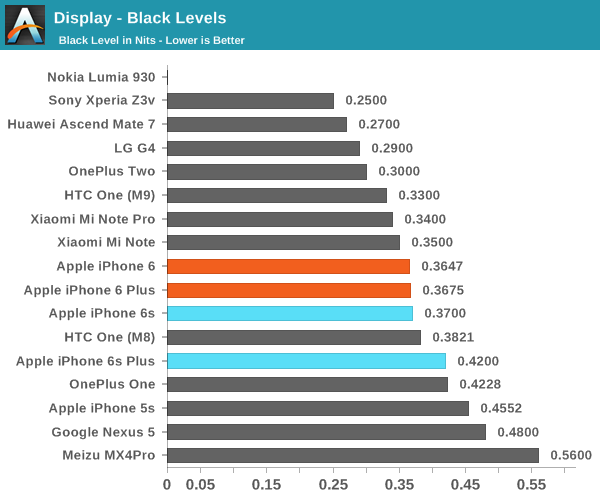
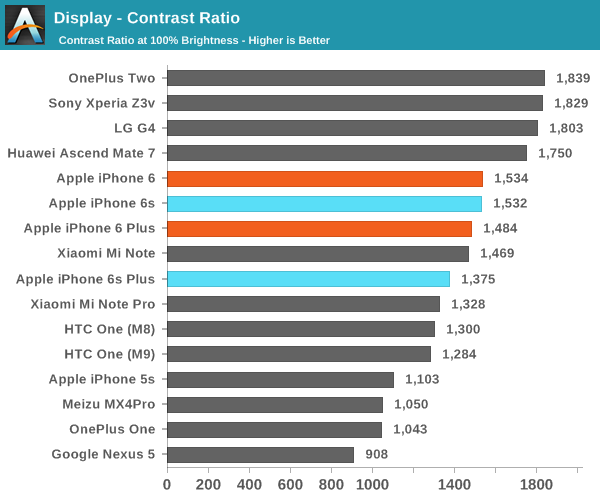
Moving on to our usual brightness and contrast testing, it looks like Apple has improved the maximum brightness of their displays with the use of the new LED backlight driver, but it’s important to note that in the case of the iPhone 6s, the maximum brightness isn’t constant. The behavior is relatively subtle, but with iOS 9 at maximum brightness the display brightness steadily lowers over the course of an hour by about 10 nits maximum. It looks like this effect tails off in both the rate of luminance decrease and overall luminance decrease as peak brightness approaches 500 nits, where the effect appears to be non-existent. It’s likely that this behavior is designed to reduce the battery impact of keeping the display at maximum brightness in all situations. Either way, peak luminance is high enough that it isn’t a struggle to read the display outdoors and contrast in low-light conditions also remains high due to the use of photo-alignment in the liquid crystal layer which helps to make the liquid crystals stay in the right shape.
iPhone 6s
iPhone 6s Plus

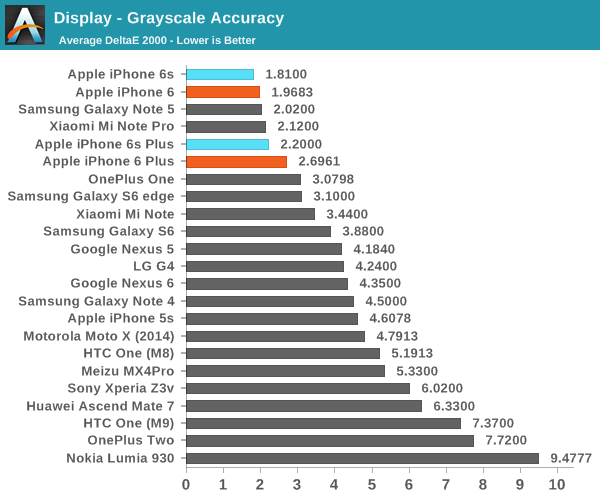
In grayscale, we don’t quite see the near-perfect white balance we saw last year but gamma remains almost impeccable when compared to the industry standard power 2.2 gamma. I suspect that the units we received this time are closer to the mean for white balance compared to last year, as in general due to the blue LED backlights used in most LCDs a colder color balance will generally require less power to display than a warmer one.
iPhone 6s
iPhone 6s Plus

In our saturation sweep testing, the iPhone 6s and 6s Plus both continue to track closely to expected values for sRGB, which is the current industry standard color gamut. I don’t really have any criticism here. The previous iPhone’s displays were of similar caliber, so this is pretty much par for the course if you’re used to iPhone displays.
iPhone 6s
iPhone 6s Plus
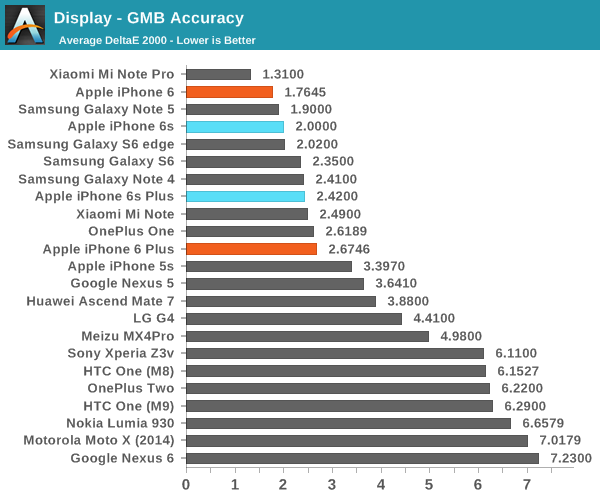
Similarly in the GMB ColorChecker, the iPhone 6s and 6s Plus both pass with flying colors. If you’re using an iPhone 6s or 6s Plus for any remotely color-critical work like viewing and/or editing photos and videos, it’s a pretty fair bet that you’ll be able to rely on these phones to provide an accurate color reproduction in pretty much any condition. Samsung does provide better contrast and the possibility of extra color saturation with their Galaxy S6 and Note 5, but this comes at the cost of potential for burn-in, increased power consumption in certain scenarios, and increased distortion with changes in viewing angles. I think this means that it basically comes out to a wash, but depending upon personal taste one may prove to be better than another.



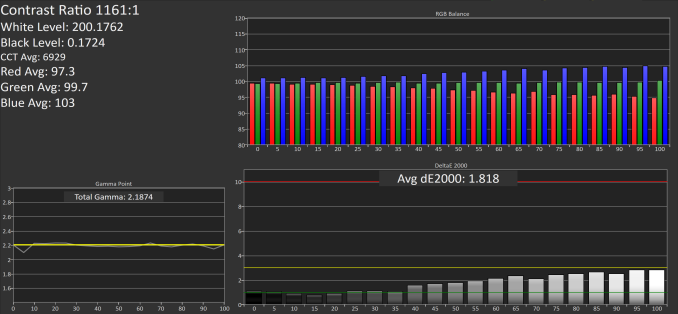
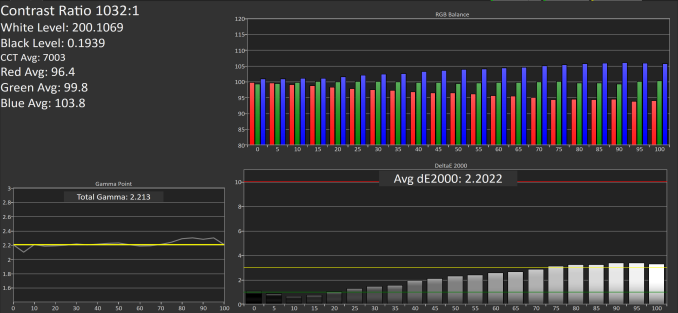
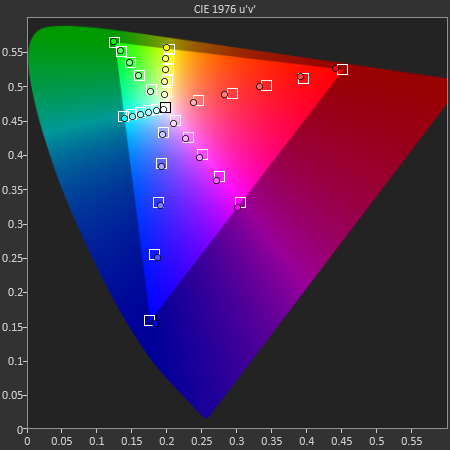
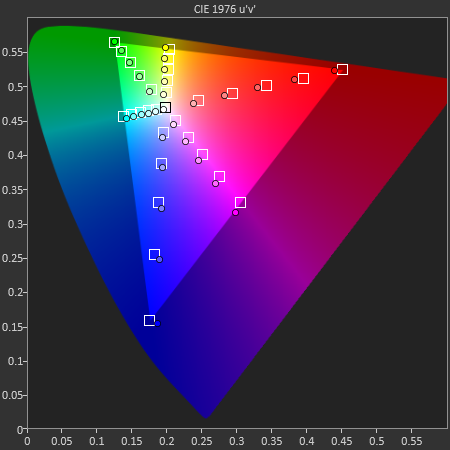
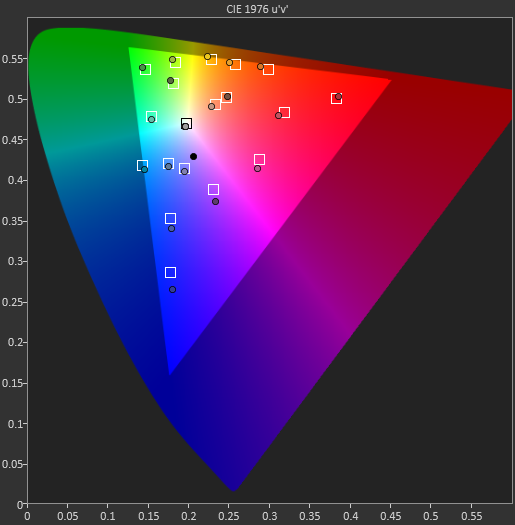
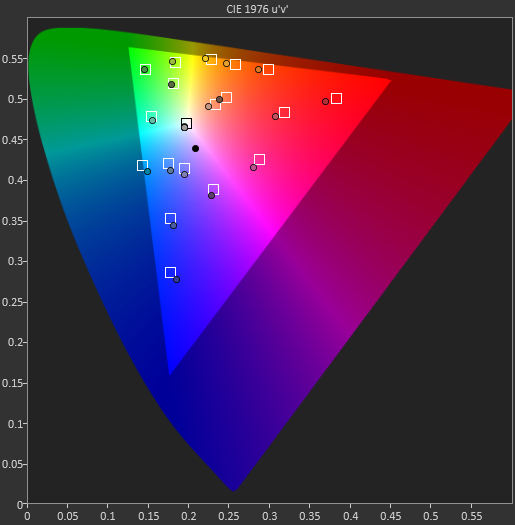








531 Comments
View All Comments
ciderrules - Tuesday, November 3, 2015 - link
You think long press is OK? Imagine if right clicking in Windows you had to hold the right mouse button down for a second before the context menu popped up. You think people would accept that? 3D Touch is literally right click. It's faster than that stupid long press and leaves long press for other less used options.Note 5 is inferior to the iPhone 6S Plus. In almost every way, except the screen. And the screen is not nearly as big an advantage as you try to make it out to be. Sound like someone is upset at their choice of purchase.
MattL - Tuesday, November 3, 2015 - link
@ciderrulesYour tone reveals your bias.
Long press is fine, you can have a long press that's as low as 500 ms or so, maybe even less... Pressure sensitive touch (I refuse to call it 3D touch lol) might be a slight bit faster, maybe more efficient, we'll see... but the truth is that a lot of the functionality that was added could have easily been done with a long press, right now people are seeing the contrast of going from no long-press like context specific functionality straight into pressure sensitive context menus, so it seems extremely improved because they skipped an entire step they could have done long ago.
You assume too much about me lol, I don't own a Note 5, I own a Note 4. I didn't see a reason to pay to upgrade to the Note 5, it's an incremental upgrade, worth getting for new users but not enough to rush to upgrade. I have owned an iPhone in the past, so I'm plenty familiar with Android and iOS... I love my Note 4 and don't see any reason to upgrade to either Note 5 or iPhone 6s Plus.
The iPhone 6s Plus is not superior in every way except the screen lol. The screen is very likely to be superior on the Note 5 (since Samsung has put out far superior screens for multiple generations now) though I'll hold off on the Display Mate review which does a *far* deeper analysis than Anandtech on screen. Areas where Anandtech makes offhand commments about viewing angle quality etc Displaymate will release hard numbers, such as how much brightness decreases at an angle, contrast loss, etc.
Don't downplay the advantage of screen quality in the Samsung phones over the iPhones though, they offer a *Far* superior contrast which often is considered the most important image quality aspect. They usually offer somewhat superior color accuracy though they both are getting so close to perfect they both are usually beyond (or close to beyond) what the human I can see. Keep in mind that the Samsung phones offer a mode that is calibrated and supports the Adobe color gamut, something that is very impressive on a mobile device (and for professionals is actually very useful). Also viewing angles are often far superior on the latest Samsung screens, especially in brightness and contrast (where you see a significant benefit).
All these things add up quite a bit and considering the screen is your primary interface input for your phone it shouldn't be underplayed... Honestly far more important than CPU and GPU speeds in my opinion (why I mostly stopped caring about CPU and GPU specs a couple years ago, though from a technical perspective it's interesting).
These are all things you should educate yourself on before you make assumption based comments about another persons intentions.
I am impressed with Apples progress on the CPU and GPU side... Storage (to a lesser extent since let's be honest PCIe storage was inevitable to come to phones, just like NFC payments came to Android phones first Apple hit this mark a bit early, credit given in context) is also a good improvement. Apple users have long argued they don't care about specs like that though ironically and honestly I've agreed with them for at least 2 years now (when I felt phones reached a certain level of power where they get diminished returns beyond that, unless some drastic new feature is discovered that needs serious more power, say maybe MS continuum where it needs to run as a desktop).
I'm just a proponent of a fair review, the distinct advantages of the Note 5 and Edge phones are heavily underplayed in this comparison while the advantages to the latest iPhone is heavily emphasized... Not only that Anandtech mentions two out of three negatives to the Samsung display aren't even mentioned in their Samsung review (and something I don't find mention of in other in-depth display reviews) so either they didn't feel the need to point it out when they actually reviewed the product or they felt the need to speculate or invent new negatives to make it look more balanced.
Comparisons are pointless unless they are fair.
MattL - Tuesday, November 3, 2015 - link
Also to add, one area where the latest Samsung phones excel (and other Android phones actually) is camera quality. Refer to the dxomark analysis where the iPhone's latest camera is literally a wash compared to it's last gen tech... while Android cameras (that were already better than last gen iPhone) have taken a further step up.Ironically it's a reverse of what you see with the SoC, where Apple took a big step forward while Android SoC languished a bit (though again to be fair it's 6 months older, but still it wasn't a bit step forward) while the iPhone camera performance literally was overall equal to last gen (a baby step forward in some areas and backward in others) while Android continues to use camera tech that progresses nicely forward.
osxandwindows - Tuesday, November 3, 2015 - link
Personally I like the iPhone camera better.I have a note 5 and iPhone.
Some people think DXO marc were paid.
Many people like the iPhone camera better tho.
The note 5 has a grate camera.
Heck people didn't like the sony z5 at all.
So on the camera side its completely your opinion.
Or should I say personal for a preference.
MattL - Friday, November 6, 2015 - link
But see it isn't your opinion lol. That's like saying the SoC is your opinion, which completely invalidates all the great work Anandtech did on reviewing every detail of that SoC.Now how the software uses that SoC (being the OS) comes somewhat down to opinion, do you like iOS vs Android etc.
Cameras are the same way, you can analyze the raw performance of a variety of aspects, especially the sensor. Now how you like the Camera app software, that can come down to preference or if there are trade-offs you might prefer trading one thing for another etc.
Also no one who has a clue thinks dxomark was paid off lol. They've been doing sensor analysis for a long time, before mobile phones were worth measuring they just did DSLR sensor analysis, including the top end professional grade cameras. They still do this and are still an oft referenced source not only by professionals and consumers but by other camera review sites around the web. Sensor and metric performance is just one aspects of a Camera of course, but they offer tangible and quantifiable metrics that can help you understand how cameras compare... and the latest gen of iPhones scored equal to the last gen, effectively no improvement, while the Android cameras keep leading the pack.
It's not surprising since the leading sensors on the Mobile list on dxomark are made by Sony which also has the leading sensors in professional grade DSLR and mirroless cameras as well. Sony has made best-in-class sensors (Nikkon has used sony sensors for many of their cameras for a while now) for a long time.
This is why anyone who has a clue just laughs at anyone questioning Dxomark or that a Sony sensor in a phone can be better than an Apple one.
Again there are more things to consider than raw performance, much like the iPhone's new superior SoC won't get you Android style widgets, a back button, or multi-tasking if you prefer those things... just like a new Android coming out with a faster SoC won't get you the iOS UI experience (if that's your preference)... but there are important metrics to evaluate and it feels like this review downplayed all the advantages of the other phones and overplayed the CPU and GPU advantage in the new iPhones. Some of us just think that's a bit biased.
ciderrules - Tuesday, November 3, 2015 - link
Something clearly bothers you to spend so much time typing a response.osxandwindows - Wednesday, November 4, 2015 - link
Naw man just felt like doing it.FL777 - Friday, November 6, 2015 - link
Great comment, I thought that the authors "fell in love" with the efficiency that Apple built into its new SoC. Being computer lovers, it is somewhat foregivable. However, they do appear to be school children saying, "Wow, this bright shiny SoC is the best damn thing in the whole wide world."Hands down, the Note 5 and Galaxy S6 at the very least compete with the iPhone 6S and in my mind, they are better phones for a number of reasons.
FL777 - Tuesday, November 3, 2015 - link
First let me compliment the authors of this article. No other website anywhere does as thorough a job as Anandtech in objectively reviewing a smartphone. You provide solid, objective facts for your reviews. That is something most reviewers utterly fail at. That being said I have some criticisms:1. The iPhone 6S display is just sad compared to the Ssamung S6 and Note 5
2. 3D Touch has been listed as buggy in other reviews and yet you don't mention this issue
3. The Note 5 and Samsung S6 BOTH charge much more quickly than the iPhone 6S. That is VERY IMPORTANT IN THE REAL WORLD
4. Both the Note 5 and the S6 have wireless charging, which is very convenient. The Note 5 has quick wirless charging which is revolutionary - no other phone has it.
5. The Samsung S6 and Note 5 SoC is effectively about 7 months older thatn the iPhone 6S SoC. I hope you will be as complimentary to the Galaxy S7 SoC when it comes out in January. It is supposed to be 25% faster than the 6S SoC. The new Samsung SoC is rumored to be a beast.
6. Also upcoming with the Galaxy S7 is alwo rumored (and this is just a rumor) to have its own 3D touch.
7. While the iPhone 6S is faster than the Note 5 and Galaxy S6, is there really that much difference in the real world? I think you have lost your objectivity because youa re impressed with Apple's SoC. And remember, the huge gains the IPhone 6S would not really be possible with Samsung's and TMCS's chip manufacturing skills. Apple should be concerned with Samsung's advent of manufacturing its own SoC chips - by all accounts, the Exnyos 7420 is a brilliant SoC and it STILL competes with the iPhone 6S, though it is nearly eight months older.
8. MANY professional reviewers including some professional photographer reviewers have stated that the S6 camera, the Note 5 camera and the LG4 camera are all better than the iPhone 6S camera. One rason is that they can take RAW photographs and have full manual control. Again, it appears that you have lost your objectivity when reviewing the camera functions.
9. I own the Galaxy S6 and one of my friends that I dance with has the iPhone 6S and you are INCREDIBLY wrong in your conclusions for low-light situations. At our dances, my friend's iPhone 6S is UNUSABLE, the sensor simply doesn't let enough light in My Samsung S6 has become the goto phone to take ALL of the crtical videos and pictures when we dance. One of my other friends owns an iPhone 6 and he can't use his phone at our dances. He borrowed my phone to vidoe his friend last week when his friend was dancing with a famous champion.
Simply said, you couldn't be more in error about the low-light capabliities of the two phones. Frankly the iPhone 6S is embarrassing in really dark situations.
I agree that the iPhone 6S and the Galaxy S6 / Note 5 are the two best phones on the market right now. Where we disagree is that the iPhone 6S is that much better than the Note 5 and S6. The display issue itself is embarrassing. The iPhone doesn't even have an HD screen. The 6S is the fastest smartphone on the planet right now, but so what????? It is only a microsecond faster than Samsung's last generation phones and most people won't care. Applies IOS is superior in its cohesiveness, Android is catching up quickly.
blackcrayon - Tuesday, November 3, 2015 - link
The display issue is far from "embarrassing". What's embarrassing is having a display that taxes your GPU to the point that you can't maintain top level performance over the course of an intense 3D graphics session. I'll take performance over more pixels any day, the small observable difference is a terrible tradeoff some of the manufacturers are making just to post a larger number on a spec sheet.